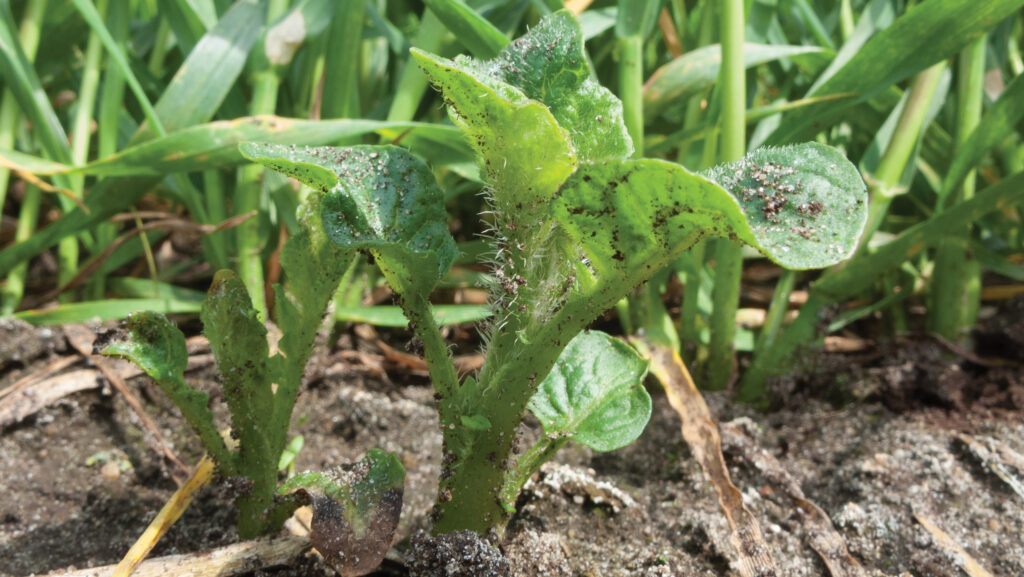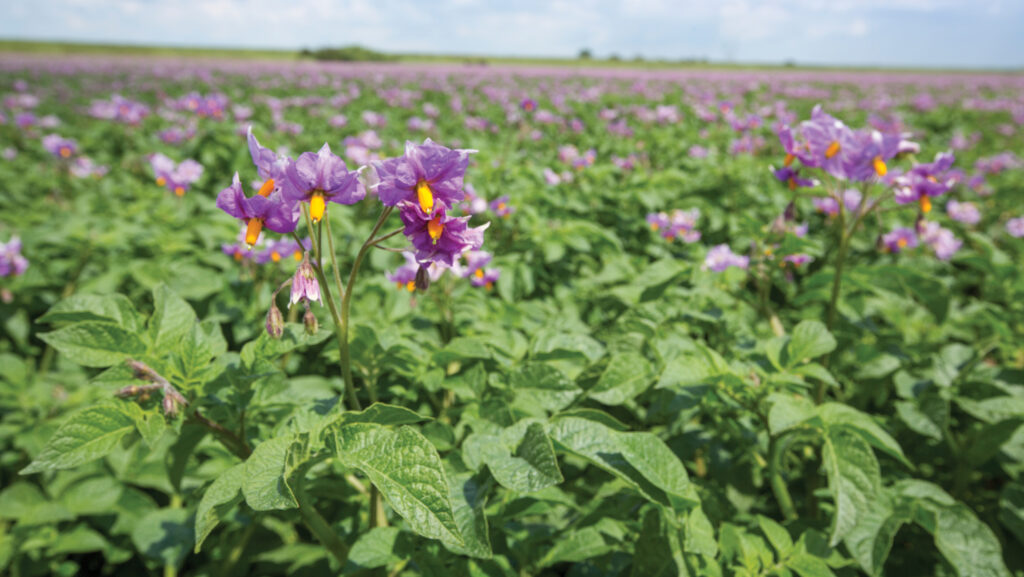Potato cyst nematode: Measures being considered in Scotland
 © Blackthorn Arable
© Blackthorn Arable Measures to protect Scotland’s seed potato sector from the spread of potato cyst nematodes (PCN) are likely to have implications for ware growers across Great Britain.
Roughly 80% of the seed potatoes planted in GB originate in Scotland.
James Price of the James Hutton Institute explains that failure to stop the spread of PCN to uninfested land is threatening Scotland’s status as producer of classified seed.
See also: Potato growing innovations to cut inputs and carbon footprint
“At the current rate of spread, it could be the end of seed potatoes in Scotland by 2050 – this is just five rotations away,” James said.
To tackle the epidemic, the Scottish government established PCN Action Scotland, a five-year project with a far-reaching remit and a budget of £2.5m.
This is the single biggest ever allocated for a plant health project by Holyrood.
Proposals under consideration within the project include measures to promote the wider adoption of resistant varieties and to incentivise growers to control groundkeepers (volunteers) in following crops.
Previous efforts to encourage better control of volunteers have fallen short of expectations with reliance on rented land often cited as an impediment.

© Blackthorn Arable
“The development of targeted-spraying systems such as those already used in field vegetables, means there is no longer a credible reason to explain poor control [of groundkeepers].
“Whether the obligation falls on the landowner or the individual renting the land remains to be determined,” James said.
Other work has focused on identifying the genes that convey resistance so improved markers can be utilised by commercial breeders.
A decision support system (DSS) has also been developed to help growers identify the control strategies best suited to their situation.
To harness the benefits of the DSS, growers will need to understand their PCN population dynamics, namely which species infests their land.
Making progress, however, rests in having better oversight of the problem.
Mandatory testing of ware land is another option under consideration as it would help promote wider use of resistant varieties, but this is likely to be avoided by growers on cost grounds.
Putting Scotland on a path to better PCN control has involved identifying why the current policy is failing.
This task has fallen to Dr Jon Pickup, senior nematologist at Sasa, who for most of his working career has been responsible for implementing statutory nematology policies.
His remit is, in effect, to challenge the official policy of the past 30 years to identify what needs to change.
“Any proposals will need to show regard for the legislative requirements of the EU directive while simultaneously observing the expectations of our international trading partners so as not to jeopardise export markets,” said Jon.
Current policy
Current policy is based on a soil testing regime which, Jon said, falls short of providing effective control.
“It’s sufficient to inform variety selection and nematicide use, but for preventing transmission? It’s not fit for purpose.
The consequence of this is that a proportion of seed crops from all countries where PCN is present in a seed production system will inevitably carry the pest,” he said.
One option under consideration is to change the guidance on statutory sampling to allow units as small as 1ha to be recorded, as is the case in the Netherlands.
Currently in Scotland sampling units are 4ha.
This would reduce the area recorded as infested which would provide more land available for seed production.
“We would need to protect this land from the risk of infestation by stipulating that only resistant varieties can be grown.
“This would create a buffer zone adjacent to the infested area. It may be that this is insufficient, in which case it could be extended to the whole field.”
Predicting risk
Using data to predict which land is most at risk could also help to promote suitable measures, partly addressing the limitations of soil sampling.
“We can already predict with a high level of accuracy where we are likely to find PCN.
“We could use this to support a risk assessment that indicates which species is likely to be present and the action required.”
A move to post-crop soil testing is another possibility that would improve detection rates. Sas estimates that doing so would lead to a 5% increase in land deemed infested (with PCN).
“We may need the flexibility to implement further measures that are proportionate and pragmatic, including the option to market seed crops as ‘free of soil’ (where soil is brushed from the tuber).
“However, this would not align with current EU legislation,” Jon said.
Globodera rostochiensis
The industry’s focus has been to breed varieties with good resistance to one of the two key species of potato cyst nematode (Globodera rostochiensis), but with this has come the unintended consequence promoting populations of Globodera pallida.
The group has sought to address this through policies that show regard for both species.
“We need more dual resistant varieties or at least a mechanism that allows growers to alternate between rostochiensis- and pallida-resistant varieties.
“The decision support systems being developed will reflect this reality.
Extreme option
“An extreme option would be for government to prohibit production, other than of highly resistant varieties, on land found to be harbouring high levels of PCN, for example, more than 10 eggs per gram of soil,” said Jon.
At the heart of the review is who should lead delivery of the policy; should it be government or industry?
If industry is to lead it, Jon makes the point that it will require end-users to properly embrace the ethos of sustainable potato production if resistant varieties are to gain acceptance.
“There is already a broad selection of resistant varieties suitable for use on seed land, but they’re not widely adopted.
“This needs to change. But let’s be realistic in our aspirations; it is unlikely we will ever eradicate PCN, but there is more we can do to minimise its transmission between infested and uninfested land.”
As a member of the working group, Scottish Agronomy senior agronomist Eric Anderson has been closely involved with ensuring that any new proposals are pragmatic.
“The need to achieve better control of PCN is unquestionable. There are some growers who dispute its importance perhaps because of the protection afforded by nematicides or that the damage caused is less apparent than say, late blight, scab or scurf,” he said.
“While the need to control these threats is purely economic, there is also a legislative need to control PCN.”
“The reluctance among a cohort of growers to recognise the threat posed by PCN partly explains the poor take up of resistant varieties although a lack of market support is also a factor.
“Legislation imposing the adoption of resistant varieties would force the market acceptance of these varieties needed for growers to embrace them.”
Maris Piper
For Eric, the preference of retailers for Maris Piper is undermining efforts to develop a sustainable future.
“Retailers favour Maris Piper because of its cooking versatility, but it is largely responsible for the deteriorating situation.
“That it produces reasonable yields in the presence of both species rewards growers, but we are fast reaching the point where production will no longer be viable,” Eric said.

© GNP
Information for this article was discussed at the Association of Applied Biologists 6th symposium of potato cyst nematode management.

